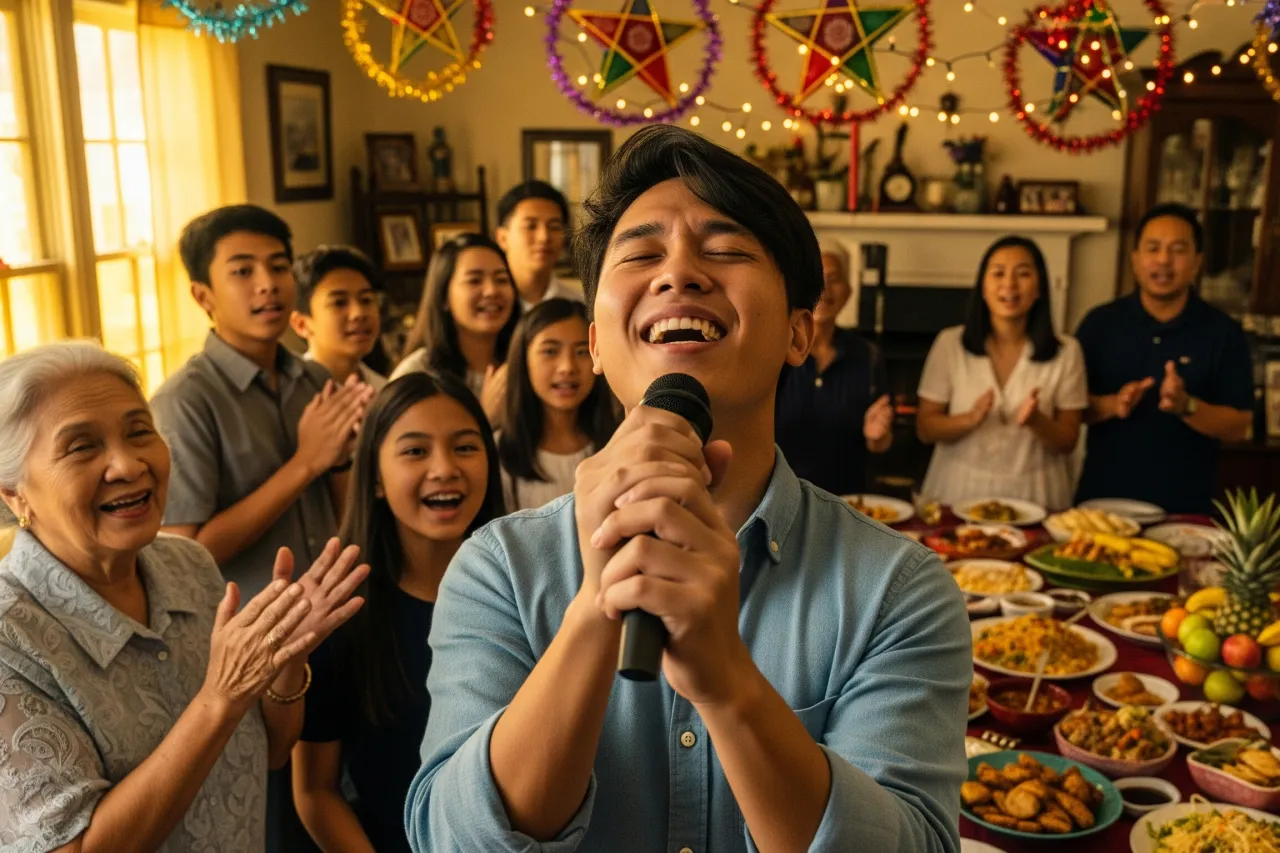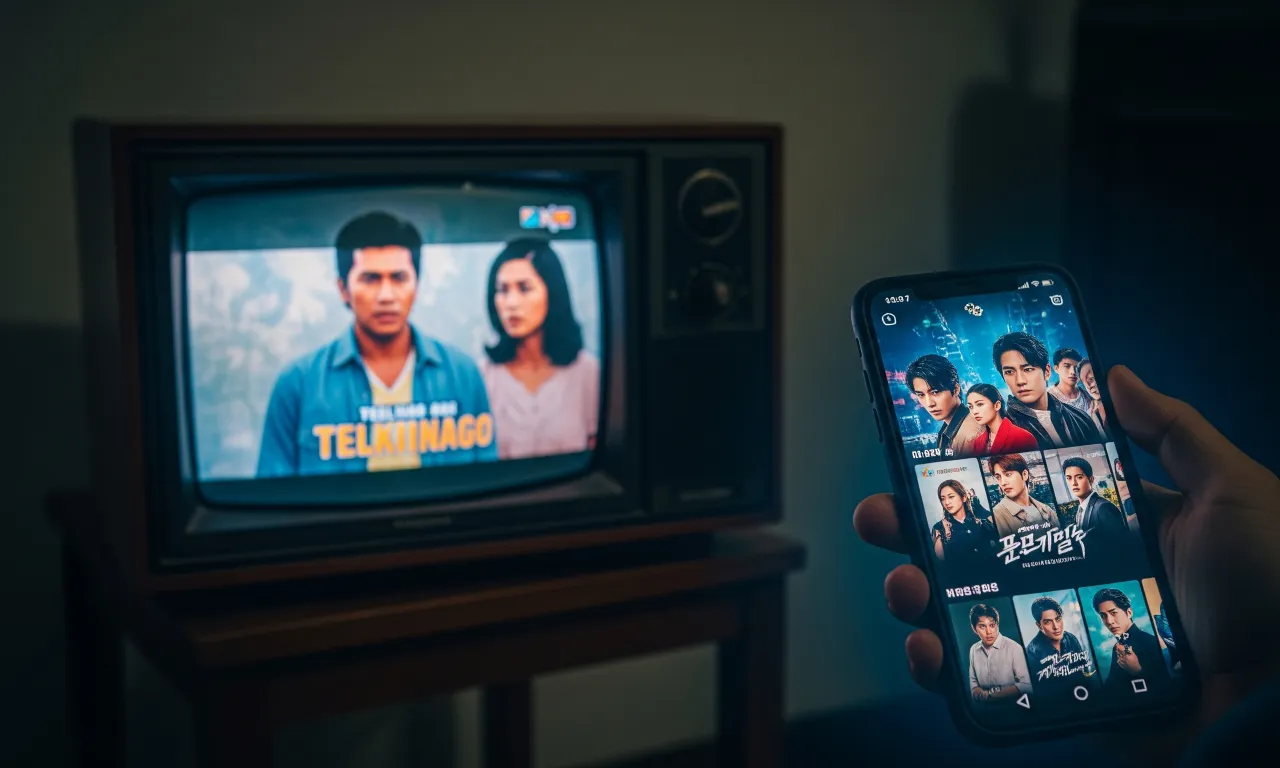🔥 The Mic Is On: How a Machine Became the Heart of a Nation
In the Philippines, the sound of a singing machine is the universal soundtrack to celebration. From a remote barrio to a bustling city street, the first sign of a party isn’t the smell of food or the sight of balloons—it’s the unmistakable warble of someone belting out a classic ballad. Karaoke, or more specifically “videoke,” isn’t just a hobby here; it’s a social institution, a national pastime, and a powerful force that has profoundly shaped how karaoke shaped Filipino social life. It’s the ultimate equalizer, turning a shy tito into a rock star and a quiet cousin into a diva. It’s a drama that unfolds with every song, a testament to our enduring love for music and community.
While the karaoke machine was invented in Japan, it was a Filipino, Roberto del Rosario, who patented the “Sing Along System” in the 1970s, making it a household staple. This innovation unlocked a new era of communal entertainment. The karaoke machine became a permanent fixture, transforming ordinary gatherings into extraordinary events. It’s in the moments between songs, the shared laughter at a failed high note, and the collective applause for a pitch-perfect performance that the true magic happens.
🤝 The Great Equalizer: Bonding Across Generations and Classes
Karaoke has the unique ability to break down social barriers in a way few other activities can. It’s a stage where everyone gets a turn in the spotlight, regardless of age, status, or even singing ability.
The Drama: At a typical Filipino family reunion, you might see a corporate executive sharing the microphone with a tricycle driver. A lola (grandmother) might sing a timeless kundiman with the same machine a teenager uses to belt out a P-pop hit. The scoring system, a popular feature of many videoke machines, adds a layer of friendly competition that creates instant camaraderie and hilarious rivalries. The focus isn’t on perfection but on participation. You don’t have to have the voice of a pro; you just have to have the courage to sing. This shared experience fosters a sense of unity and belonging that strengthens family ties and community bonds.
- Bridges Generational Gaps: It provides a common ground for older and younger generations to connect through music.
- Encourages Participation: The inclusive nature of karaoke ensures that everyone feels welcome and included in the festivities.
- Fosters Camaraderie: The shared experience of singing, laughing, and cheering creates lasting memories and strengthens social connections.
For a culture that places immense value on family and community, karaoke provides the perfect platform for fostering these connections, turning every get-together into a lively and unforgettable event.
💔 An Emotional Outlet: From Heartbreak to Triumph
Filipinos are known for their deep emotionality, and karaoke provides a powerful and public outlet for these feelings. It’s a space where you can “sing your heart out” and find a form of catharsis.
The Drama: Whether it’s a heartbroken friend belting out an Aegis power ballad or a proud parent singing a joyful tune for their child’s graduation, the microphone becomes a tool for emotional release. Songs about love, loss, and triumph are not just lyrics on a screen; they are stories being performed and felt in real time. The communal aspect of karaoke means you’re not alone in these emotions; others are often singing along with you, offering silent support and shared understanding. This collective emotional release is a core part of the Filipino social experience. It is a way of coping, celebrating, and communicating feelings that are sometimes hard to express in everyday conversation.
- Emotional Release: It allows people to process and express a wide range of emotions through song.
- Shared Storytelling: The song choices often reflect personal stories and feelings, creating a deeper level of connection among friends and family.
- Coping Mechanism: For many, singing is a form of stress relief and a way to momentarily escape from daily struggles.
This emotional dimension is why karaoke often transcends a simple party game and becomes a meaningful ritual.
🤔 FAQs about Filipino Karaoke Culture
Q1: Is the Philippines the “Karaoke Capital of the World”? A: While karaoke was invented in Japan, the Philippines’ deep passion for singing, high rates of participation, and the ubiquity of karaoke machines in every social setting have earned it the unofficial title of the “Karaoke Capital.”
Q2: What is the difference between karaoke and “videoke”? A: In the Philippines, the terms are often used interchangeably. However, “videoke” specifically refers to machines that include a scoring system, which is a very popular feature in the country.
Q3: Is the “My Way” curse real? A: The “My Way” curse is a morbid urban legend surrounding a handful of violent incidents related to people singing the song “My Way” by Frank Sinatra. While these events did occur, they are extreme and isolated cases, not a common phenomenon.
🇵🇭 The Melody of a Nation
Karaoke has become an essential part of the Filipino social fabric, a cultural institution that reflects our values of community, emotional expression, and joy. It is more than just a musical pastime; it is a unifying force that brings people together, celebrates our shared heritage, and provides a stage for everyone to have their moment in the spotlight. In a country that loves to sing, the microphone is not just an object—it’s a key to connection. It’s the heartbeat of every Filipino gathering.
What’s your go-to karaoke song? Share it in the comments! 👇




